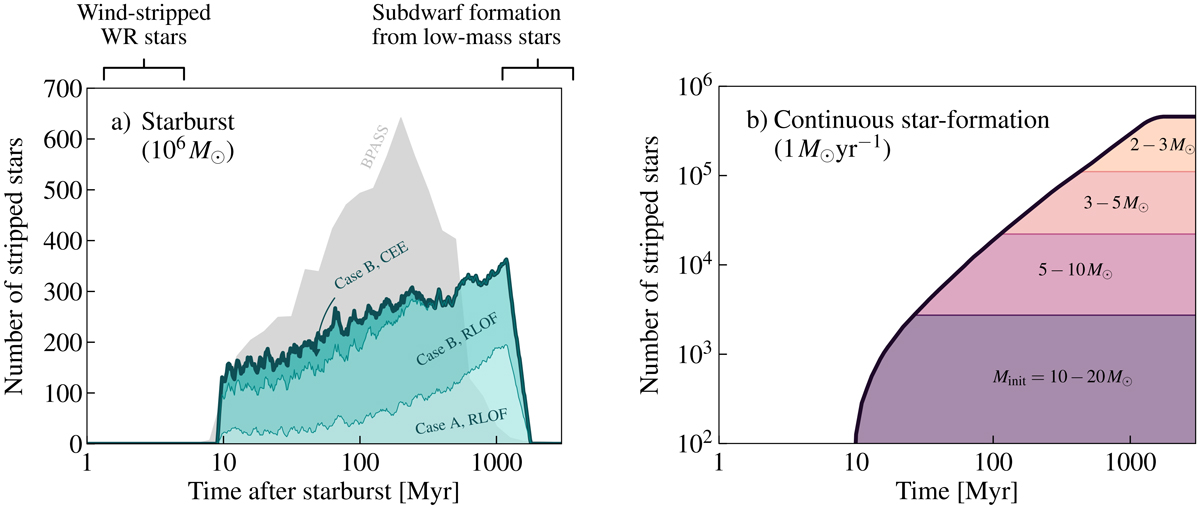Fig. 1.

Number of stripped stars shown as function of time for a population of solar metallicity. Panel a: numbers for a co-eval stellar population with initially 106 M⊙ in stars. We highlight the three formation channels that we consider to lead to the formation of stripped stars: stable mass transfer initiated during the main sequence evolution of the donor star (Case A, RLOF in light green), stable mass transfer initiated when the donor star passes over the Hertzsprung gap (Case B, RLOF in medium green), and successful ejection of a common envelope that developed during interaction initiated during the donor’s Hertzsprung gap evolution (Case B, CEE). For comparison, we show the number of low-luminosity WR stars predicted by BPASS in light gray (Eldridge et al. 2017). We indicate the expected time of WR star formation through solely stellar winds and the time of subdwarf formation through low-mass stellar evolution above the panel. Panel b: case of continuous star formation at a rate of 1 M⊙ yr−1. We show the parts of the population of stripped stars that are created from progenitor stars with initial masses between 10 − 20 M⊙ in purple, 5 − 10 M⊙ in pink, 3 − 5 M⊙ in salmon, and 2 − 3 M⊙ in peach.
Current usage metrics show cumulative count of Article Views (full-text article views including HTML views, PDF and ePub downloads, according to the available data) and Abstracts Views on Vision4Press platform.
Data correspond to usage on the plateform after 2015. The current usage metrics is available 48-96 hours after online publication and is updated daily on week days.
Initial download of the metrics may take a while.


